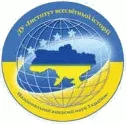СТРАТЕГІЇ МІГРАЦІЙНОЇ ПОЛІТИКИ АВСТРАЛІЇ: ЕТАПИ СТАНОВЛЕННЯ, НОВІ ВИКЛИКИ ТА ВІДПОВІДІ НА СУЧАСНІ ЗАГРОЗИ
##plugins.themes.bootstrap3.article.main##
Анотація
У статті розглядається Австралійська міграційна політика, етапи її становлення та розвитку, сучасний стан справ. Можна виділити три етапи міграційної політики Австралії в період після Другої світової війни: політика асиміляції, політика інтеграції та політика культурного різноманіття і мультикультуралізму. Дана політика регулюється Міністерством імміграції Австралії. З моменту створення назва Міністерства була змінена більше десяти разів, що відображало основні напрями діяльності установи та функції за ці періоди.
Підсумовуючи результати, отримані внаслідок роботи над статтею, можна сказати, що, якщо перший очільник Міністерства імміграції у 1945 р. пропагував масову британську імміграцію, проголошуючи гасло «Заселити або загинути», то з плином часу назва Міністерства та політика щодо іммігрантів змінювалася. У березні 1996 р. назва установи змінилася на Міністерство імміграції та мультикультурних питань, чиїм гаслом було «Збагачення Австралії шляхом міграції». Головною ідеєю міграційної стратегії стало створення мультикультурної країни з сильним потенціалом завдяки її різноманітності. У 2007 р. поняття «мультикультуралізм» виключено з назви структури; більший акцент у роботі Міністерства було зроблено на визнанні національної ідентичності, заснованої на низці основних цінностей, які все ще сприяють розвитку мультикультурного суспільства. 2017 р. було офіційно створено Міністерство внутрішніх справ, що сьогодні займається імміграцією.
На початку ХХІ ст. в країні діє Австралійська міграційна програма, що передбачає декілька основних причин, за якими громадяни іншої держави можуть здійснювати в’їзд на довготривале проживання в країну: студентська, кваліфікована імміграція (враховується професійний досвід, навички або кваліфікація, які потребує на момент дії програми економіка Австралії), возз’єднання сім’ї (члени сім’ї, які проживають в Австралії), особливі обставини (повернення громадян Австралії, які раніше покинули країну). Також є гуманітарна програма по міграції та адаптації у австралійське життя біженців.
Завантаження
##plugins.themes.bootstrap3.article.details##
Посилання
Rickard, J. (1994). Australia Historia Kultury. Kraków: Zakład Narodowy im.Ossolińskich. [In Polish].
Lencznarowicz, J. (2005). Australia. Warszawa: TRIO. [In Polish].
The Immigration Restriction Act 1901. [Online]. Avaliable from: https://nla.gov.au/nla.obj-2141191645/view?partId=nla.obj-2147449703#page/n0/mode/1up [In English].
Lack, J. & Templeton, J. (1995). Bold Experiment. A documentary history of Australian Immigration since 1945. Melbourne: Oxford University Press. [In English]. https://doi.org/10.1177/144078339603200112
Kunz, E. (1988). Displaced Persons. Calwell’s New Australians. Sydney. [In English].
Powell, J.M. (1991). Historical Geography Modern Australia: The Restive Fringe (Cambridge Studies in Historical Geography). Cambridge New York Port Chester Melbourne Sydney: Cambridge University Press. [In English]. https://doi.org/10.1177/030913258901300223
Smolicz, J.J. (2000). Współkultury Australii. Warszawa: Oficyna Naukowa. [In Polish].
Migration Act 1958. No. 62, 1958. [Online]. Avaliable from: https://www.legislation.gov.au/Details/C2018C00337 [In English].
Racial Discrimination Act 1975. No.52, 1975. [Online]. Avaliable from: https://www.legislation.gov.au/Details/C2016C00089 [In English].
Multiculcuralism for All Australians: our Development Nationhood. (1982). Australian Council on population and Ethnic Affairs. – Canberra: Australian Govt. Pub. Service. [In English].
DIMIA. Report of the Review of Settlement Services for Migrants and Humanitarian Entrants (Chapter 1), 2003. [Online]. Avaliable from: http://www.immi.gov.au/media/publications/settle/_pdf/ chap01web.pdf [In English].
Department of Immigration and Multicultural Affairs (DIMA), Australia. Archive, 1997. [Online]. Avaliable from: https://web.archive.org/web/19970606092917/ http://www.immi.gov.au [In English].
Hage, G. (2003). Against Paranoid Nationalism: Searching for Hope in a Shrinking Society. Sydney: Pluto Press. [In English].
Border Protection Bill 2001. [Online]. Avaliable from: http://www.austlii.edu.au/au/legis/cth/bill/ bpb2001212 [In English].
Australian Citizenship Act 2007. No. 20, 2007. [Online]. Avaliable from: https://www.legislation.gov.au/Details/C2019C00040 [In English].
Еxplore visa options. [Online]. Avaliable from: https://immi.homeaffairs.gov.au/visas/getting-a-visa/visa-finder [In English].
Getting a visa. Visa list. [Online]. Avaliable from: https://immi.homeaffairs.gov.au/visas/getting-a-visa/visa-listing [In English]. https://doi.org/10.1007/s11759-007-9006-z
Points table for Skilled Nominated visa (subclass 190). [Online]. Avaliable from: https://immi.homeaffairs.gov.au/visas/getting-a-visa/visa-listing/skilled-nominated-190/points-table [In English].
Explore visa options for joining family in Australia. [Online]. Avaliable from: https://immi.homeaffairs.gov.au/visas/getting-a-visa/visa-finder/join-family# [In English].
Тemporary Protection visa. [Online]. Avaliable from: https://immi.homeaffairs.gov.au/visas/getting-a-visa/visa-listing/temporary-protection-785#Overview [In English].
What is a Refugee? [Online]. Avaliable from: https://www.unrefugees.org/refugee-facts/what-is-a-refugee [In English].

